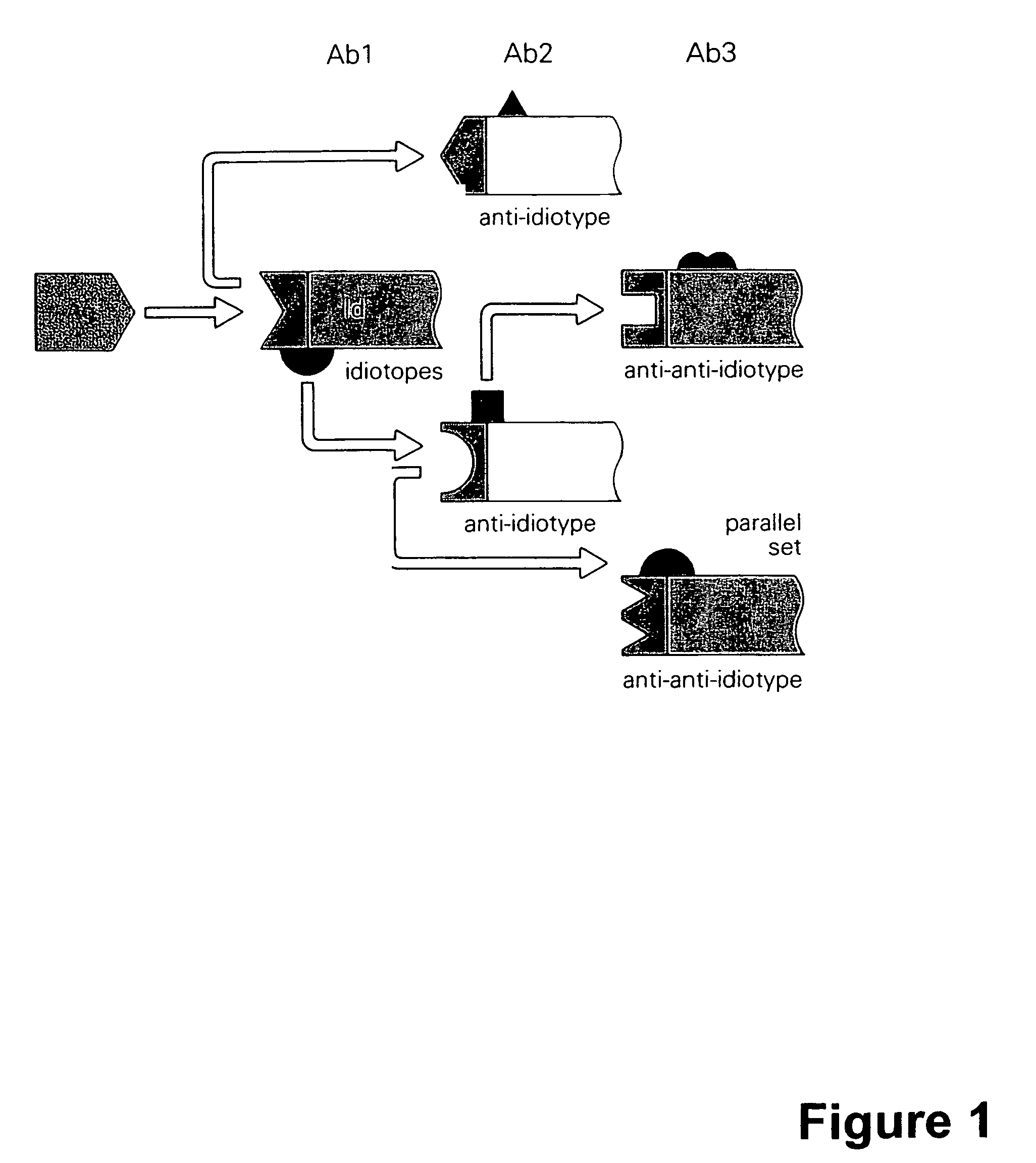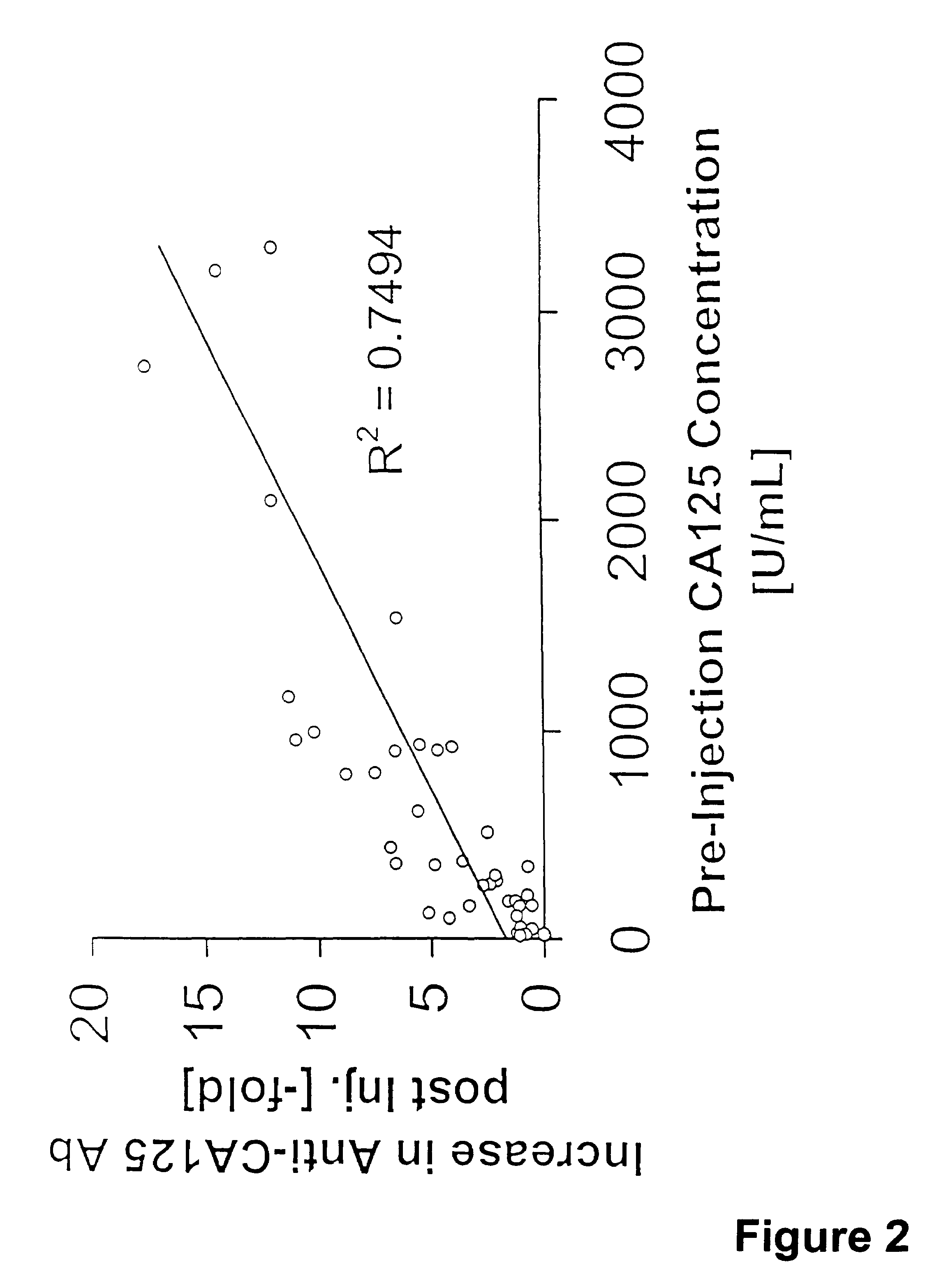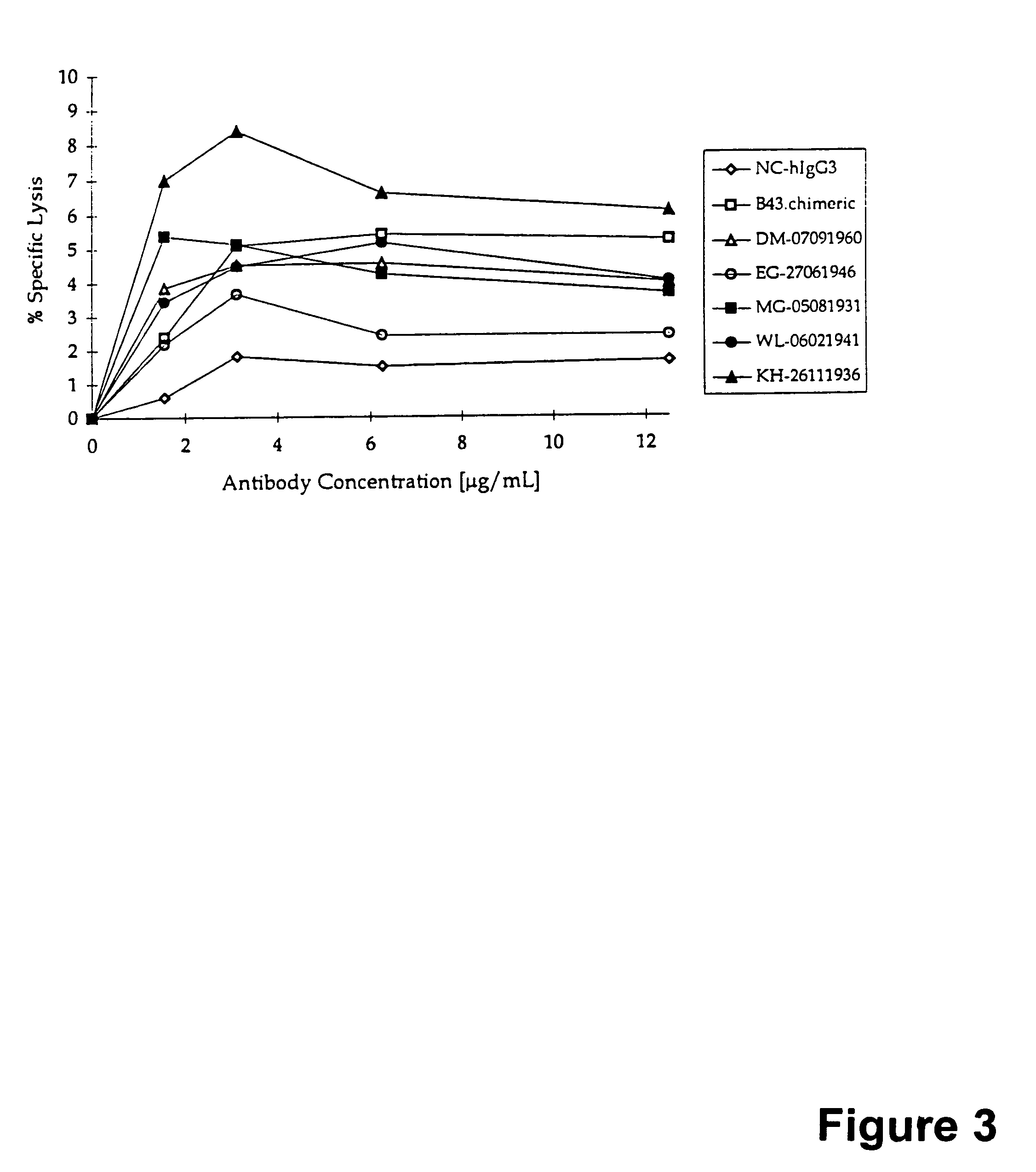Therapeutic compositions that produce an immune response
a technology of compositions and compositions, applied in the field of therapeutic compositions that produce an immune response, can solve the problems of reducing the response or the lack of any response, limiting the specificity or memory of cancer drugs, and reducing the response or memory. , to achieve the effect of enhancing the immune respons
- Summary
- Abstract
- Description
- Claims
- Application Information
AI Technical Summary
Benefits of technology
Problems solved by technology
Method used
Image
Examples
example 1
Antibody Mediated Immunotherapy Influence of Circulating Antigen in Inducing Antigen Specific Anti-Tumor Immune Responses
[0148]This example demonstrates the use of antigen-specific murine monoclonal antibodies to induce an immune response against an immune-suppressive tumor-associated antigen. Injecting an antibody against a specific epitope in a multi-epitopic antigen can lead to immune responses against various other epitopes on this antigen.
[0149]In an attempt to understand the mechanism of action of MAb-B43.13, various immunological parameters were studied in patients injected with this antibody. These studies clearly demonstrated activation of both the humoral and cellular anti-cancer immune responses.
[0150]The generation of human CA125-binding antibodies was measured before and after MAb-B43.13 injection and correlated to pre-injection CA125 levels as well as to survival data. Tables 1 and FIG. 2 show that generation of anti-CA125 antibodies correlates with CA125 pre-injection...
example 2
[0169]Similarly, injecting the binding agent to the cancer patients having circulating CA125 lead to antigen specific CTL's. Peripheral Blood Mononuclear Cells (PBMC) from eight patients injected with MAb-B43.13 were tested for cytotoxicity against CA125 positive or CA125 negative ovarian tumor cells in a chromium release assay. The results are shown in Table 5. The specificity of the lysis was confirmed by the ability of MAb-B43.13 to inhibit such lysis, as well as the inability to kill CA125 negative tumor cells. Of the 8 patients who received MAb-B43.13, at least four patients (#5 to #8) were determined to have CA125 specific cytotoxic T lymphocytes (CTL's) in their blood. The generation of CA125 specific CTL's are likely to kill ovarian tumor cells in patients.
[0170]
TABLE 5Cytotoxicity In Patients Injected With A Vaccine Containing MAb-B43.13PERCENTPERCENTINHIBITIONDIFFERENCESAMPLEBYBETWEEN CA 125PATIENTInjectionDays PostPERCENT LYSISMAb-B43.13 (5positive and CA 125IDNumberInjec...
example 3
Immunotherapy of Human Ovarian Carcinoma in an Animal Model
[0171]In order to investigate the therapeutic effectiveness, MAb-B43.13 was tested in a human-PBL-SCID / BG mouse model. Mice were reconstituted with human-PBL(normal donors) by i.p. injection of 2 to 3×107 PBL / mouse. MAb-B43.13 was administered at 100 μg / mouse in PBS, in different experimental set-ups. An isotype matched control antibody (MOPC21 or MAb-170) and PBS injection served as controls. The ovarian cancer cells NIH: OVCAR-Nu3 were injected i.p. at 1×106 cells / mouse or s.c. at 4×106 cells / mouse. Hu-PBL-SCID / BG mice were either immunized before injection of tumor cells, or after small tumors were established (two weeks after transplantation). In another experiment, tumor-bearing mice (s.c.) were injected with MAb-B43.13 two weeks after tumor transplantation, along with PBL.
[0172]Antibody injections were repeated twice in 2-week intervals. Functional and cellular characterization of serum and PBL from these mice demonstr...
PUM
| Property | Measurement | Unit |
|---|---|---|
| Dimensionless property | aaaaa | aaaaa |
| Dimensionless property | aaaaa | aaaaa |
| Body weight | aaaaa | aaaaa |
Abstract
Description
Claims
Application Information
 Login to View More
Login to View More - R&D
- Intellectual Property
- Life Sciences
- Materials
- Tech Scout
- Unparalleled Data Quality
- Higher Quality Content
- 60% Fewer Hallucinations
Browse by: Latest US Patents, China's latest patents, Technical Efficacy Thesaurus, Application Domain, Technology Topic, Popular Technical Reports.
© 2025 PatSnap. All rights reserved.Legal|Privacy policy|Modern Slavery Act Transparency Statement|Sitemap|About US| Contact US: help@patsnap.com



